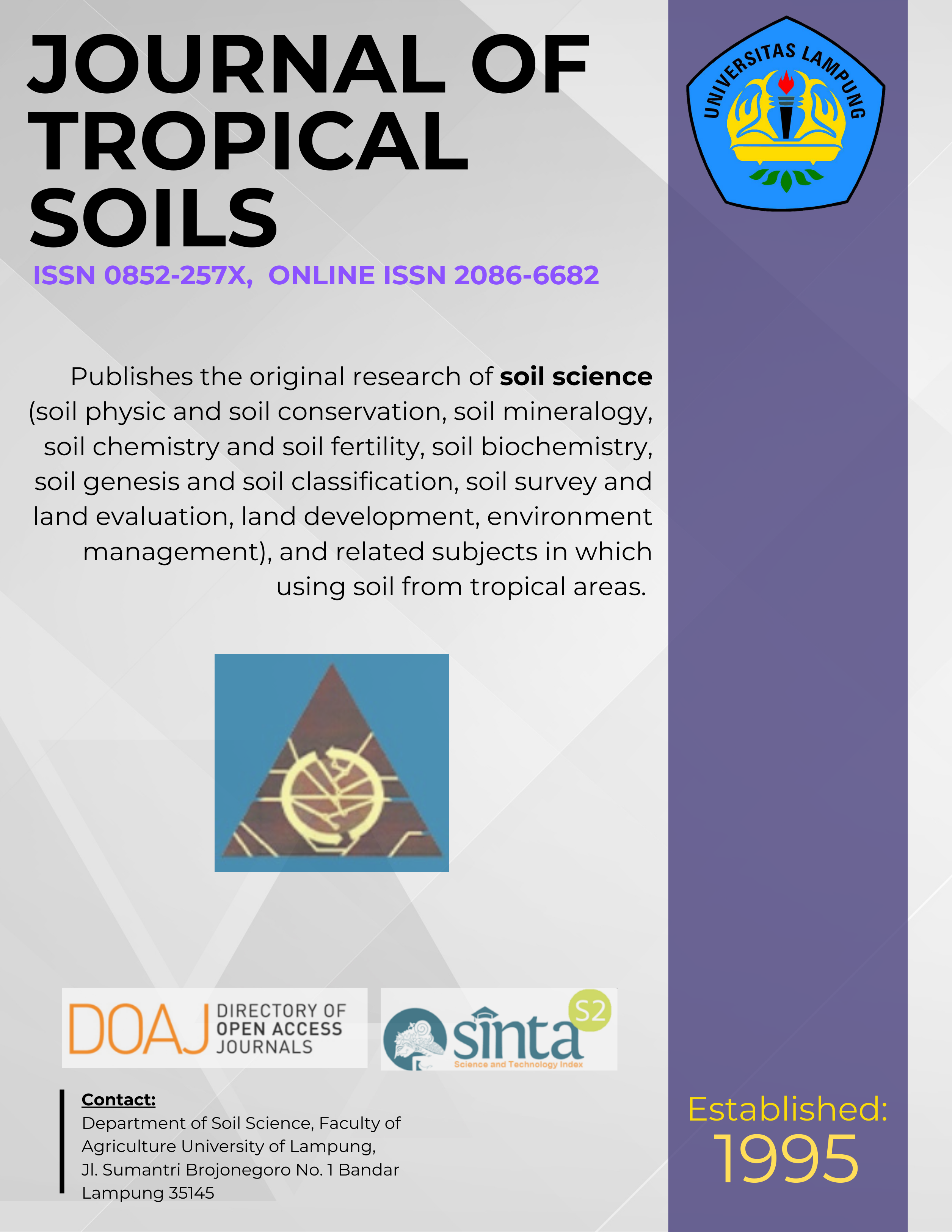Application of a Multispectral SPOT Image for Land Use Classification in Sampean Watershed
Main Article Content
Abstract
This article described the process of land use classification at Sampean Watershed. The research was conducted in Sampean watershed to calculate the land use area using a multispectral SPOT image. Two SPOT image scenes were used to identify and classify the main nomenclature of land use. The research applied level 2A of SPOT image raw data which were obtained during 2004. Research methodology consisted of geometric correction of Image; image enhancement using high sharpen filter; un-supervised classification and supervised classification. The classification algorithm used the maximum likelihood in which pixels was classified based on their spectral signature. Several
training areas were identified to define the region area. Supervised classification could classified 9 class of land uses, the classification of land use consist of irrigated paddy field (56.05%), rain fed paddy field (0.89%), forest (10.75%), urban area (8.69%), plantation (4.22%), barren land (11.19%), river (0.05%), cropland (7.98%), and bushes (0.19%). The overall classification accuracy was 84.21%. This work will be useful for hydrological modelling and management planning of the Watershed.
training areas were identified to define the region area. Supervised classification could classified 9 class of land uses, the classification of land use consist of irrigated paddy field (56.05%), rain fed paddy field (0.89%), forest (10.75%), urban area (8.69%), plantation (4.22%), barren land (11.19%), river (0.05%), cropland (7.98%), and bushes (0.19%). The overall classification accuracy was 84.21%. This work will be useful for hydrological modelling and management planning of the Watershed.
Downloads
Download data is not yet available.
Article Details
Issue
Section
Articles
License for Authors
Authors who publish with this journal agree to the following terms:
- Authors retain copyright and grant the journal right of first publication with the work simultaneously licensed under a Creative Commons Attribution License that allows others to share the work with an acknowledgement of the work's authorship and initial publication in this journal.
- Authors are able to enter into separate, additional contractual arrangements for the non-exclusive distribution of the journal's published version of the work (e.g., post it to an institutional repository or publish it in a book), with an acknowledgement of its initial publication in this journal.
- Authors are permitted and encouraged to post their work online (e.g., in institutional repositories or on their website) prior to and during the submission process, as it can lead to productive exchanges, as well as earlier and greater citation of published work (See The Effect of Open Access).
License for Regular Users
Other regular users who want to cite, distribute, remix, tweak, and build upon author’s works, even for commercial purposes, should acknowledge the work’s authorship and initial publication in this journal, licensed under a Creative Commons Attribution License.
How to Cite
Application of a Multispectral SPOT Image for Land Use Classification in Sampean Watershed. (2013). JOURNAL OF TROPICAL SOILS, 16(2), 176-181. https://doi.org/10.5400/jts.2011.v16i2.176-181

